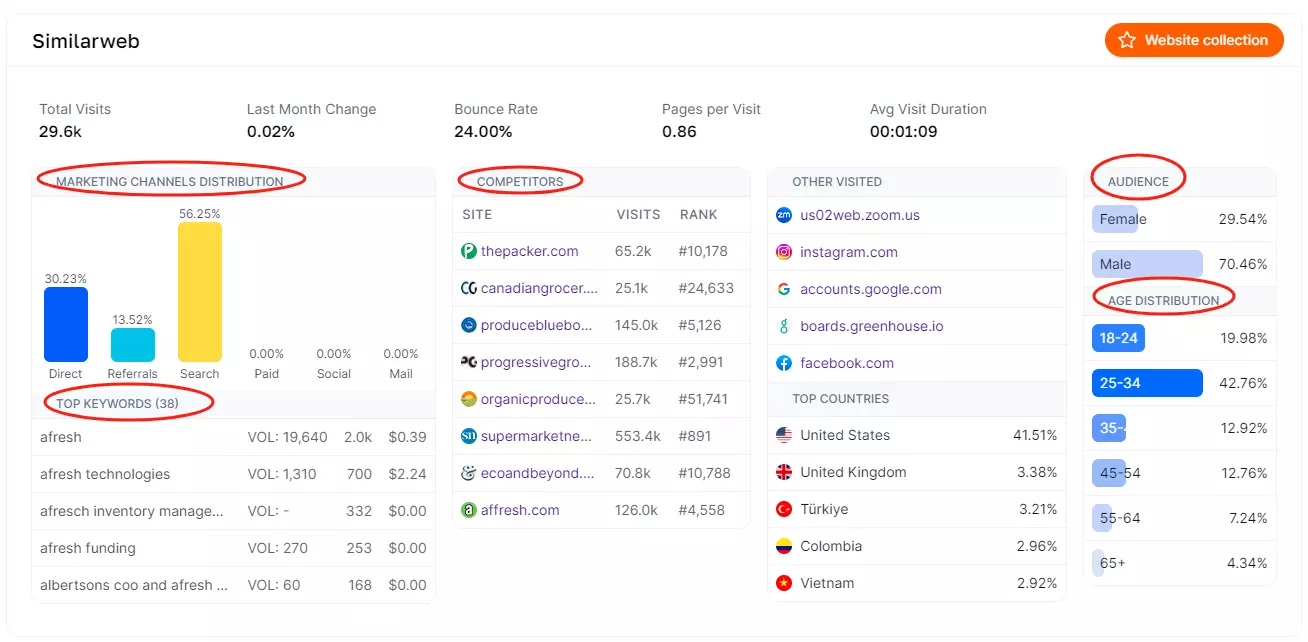
In the ever-evolving landscape of business, finding a niche market has become a strategic imperative for entrepreneurs and companies seeking to carve out a distinct and profitable space for themselves.
In this guide, we will explore the process of finding a niche market, examining the steps and considerations that can guide individuals and businesses toward identifying a niche that aligns with their strengths.
What are Niche Markets?
Before delving into the process of finding a niche market, it's crucial to understand what constitutes a niche. A niche market refers to a subset of a larger market, characterized by specific needs, preferences, or demographics.
Unlike mass markets that appeal to a broad audience, niche markets are tailored to a particular segment that may be underserved or overlooked by more generalized offerings.
You Might Also Like: Best Niches for Affiliate Marketing
How to find a Niche Market?
Identifying the environment that aligns with your interests can be a challenging task. If you find yourself struggling to pinpoint your true direction, here's a step-by-step process to guide you:
1. Identify Your Interests
Recognize your interests as a crucial starting point. Reflect on your free time activities and subjects that captivate your curiosity. If your current field of work feels mundane, it might be time for a change. Navigating a new role is demanding, but the more you enjoy your work, the easier it becomes to stay motivated.
2. Identify Problems You Can Solve
The primary objective of any business or service is to address a problem within a customer base. Engage in brainstorming and market research. Utilize tools like Google Trends to explore potential ideas aligned with your interests and identify market gaps.
3. Focus on Individuals
Not everyone will be your customer, and that's perfectly fine. Targeting the right customers is more crucial than attempting to reach everyone. Attract individuals who share your values, as building brand loyalty and a profitable business is more likely with this approach.
4. Experiment
Just as you wouldn't purchase the first pair of shoes you try on, finding your niche involves exploration. If you aim to establish an online business or e-commerce store, leverage search engine strategies to draw customers directly to your venture.
5. Gather Feedback
If uncertainty lingers, initiate conversations. Seek feedback and insights from family or colleagues. Connect with your potential customer base to understand their specific needs. Network with individuals in similar fields or positions for valuable insights.
6. Forget about Making Money at the Beginning
Although the ultimate goal is profitability, it's advisable not to burden yourself with financial pressure in the early stages of a new business. Building a profitable venture takes time.
7. Look at Competitors
Observe existing players in the market to refine your strategies and branding. However, ensure your work remains original and authentic.
There are various competitor analysis tools on the market and we would say Niche Finder is one of the most convenient and accurate tools.
In Website Audit, you can easily get competitors' information and conduct an in-depth analysis of their traffic source, top keywords, etc.

8. Find Your Unique Selling Point
Every business or service possesses a unique selling point that distinguishes it in the market. This could range from the design of an app to the ingredients in a product. Unleash your creativity to identify what makes your offering stand out.
9. Test Your Ideas
The best way to validate your niche is by putting it to the test. Develop a website, canvass door-to-door, or participate in business fairs to gain exposure to diverse ideas and showcase your own.
10. Reassess Your Chosen Niche
Regularly reassess your chosen niche. Ask critical questions: Is your business idea profitable? Who is your target audience? What solutions are you offering consumers? Successful businesses consistently reflect and readjust their strategies to stay relevant and effective.
Tips for Finding the Right Niche
Unearth the right niche for your endeavors with these helpful tips:
Consider Underserved Markets
An underserved market refers to a segment within a specific market with unmet needs.
For instance, if your locality offers ample housing options for individuals without pets but lacks affordable choices for pet owners, the pet owner demographic could be an underserved market worth exploring.
To identify such markets, peruse consumer rating indexes and websites to pinpoint areas with deficient or absent customer service.
Ensure Your Customers are Accessible
When contemplating your niche, confirm that potential customers are easily accessible, allowing you to sell products or services without significant budgetary constraints.
While it's crucial to select a niche that isn't overly competitive, it's equally advantageous to avoid niches that are too limited to sustain a business.
For instance, creating a valuable product for monks residing in a remote area might encounter challenges due to a small and difficult-to-access market compared to catering to a broader range of monasteries.
Research the Niche
Once a potential niche has been identified, engage in thorough market research to understand the advertising and branding strategies employed by similar companies in that niche.
Evaluate how you can set your offerings apart in the market and leverage your creativity. Additionally, invest time in scrutinizing the social media profiles of potential customers within your chosen niche to generate content ideas that resonate with them.
Final Words: How to Find a Niche Market
In conclusion, finding a niche market is a strategic process that involves a combination of self-reflection, market research, and a deep understanding of both your interests and the needs of a specific audience.
By carefully navigating the steps outlined in this guide, individuals and businesses can uncover lucrative opportunities within niche markets.
The key is to strike a balance between personal passion and market demand, creating a synergy that leads to sustainable success!

